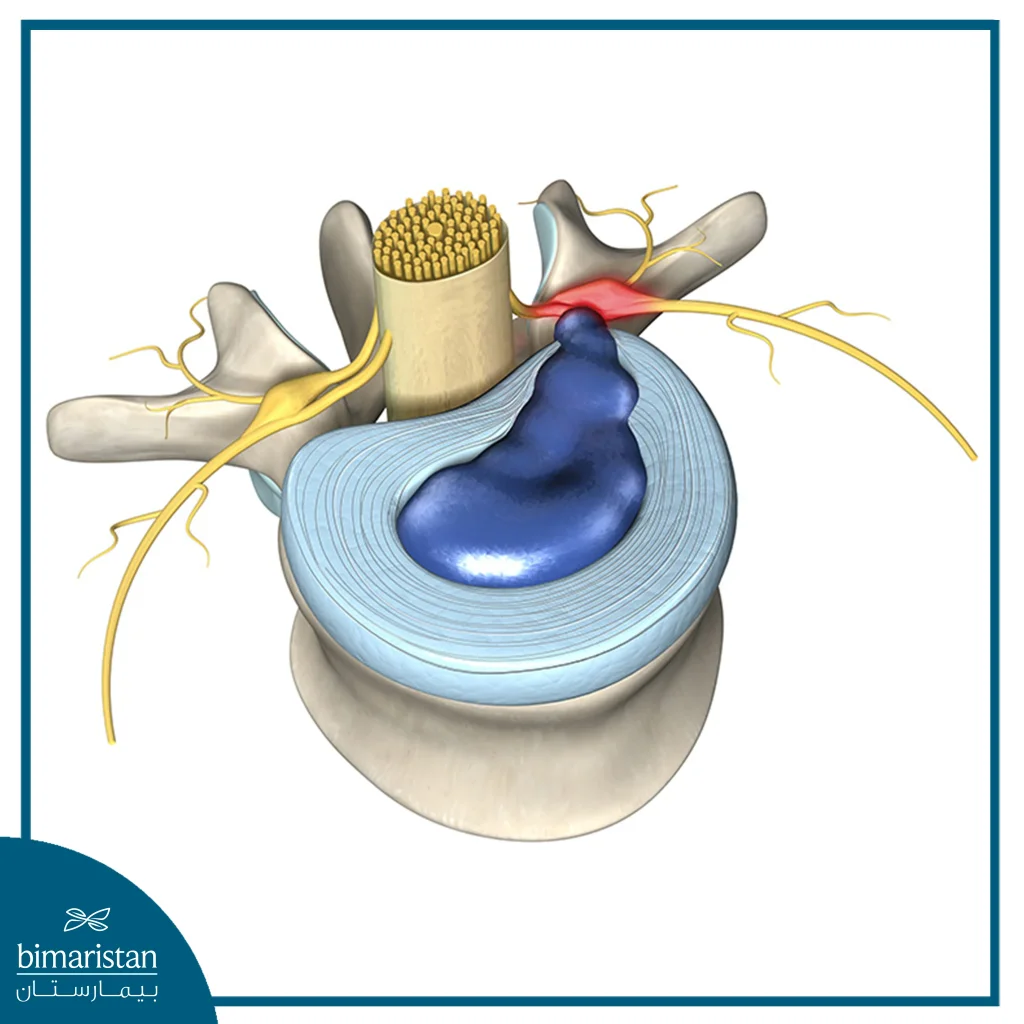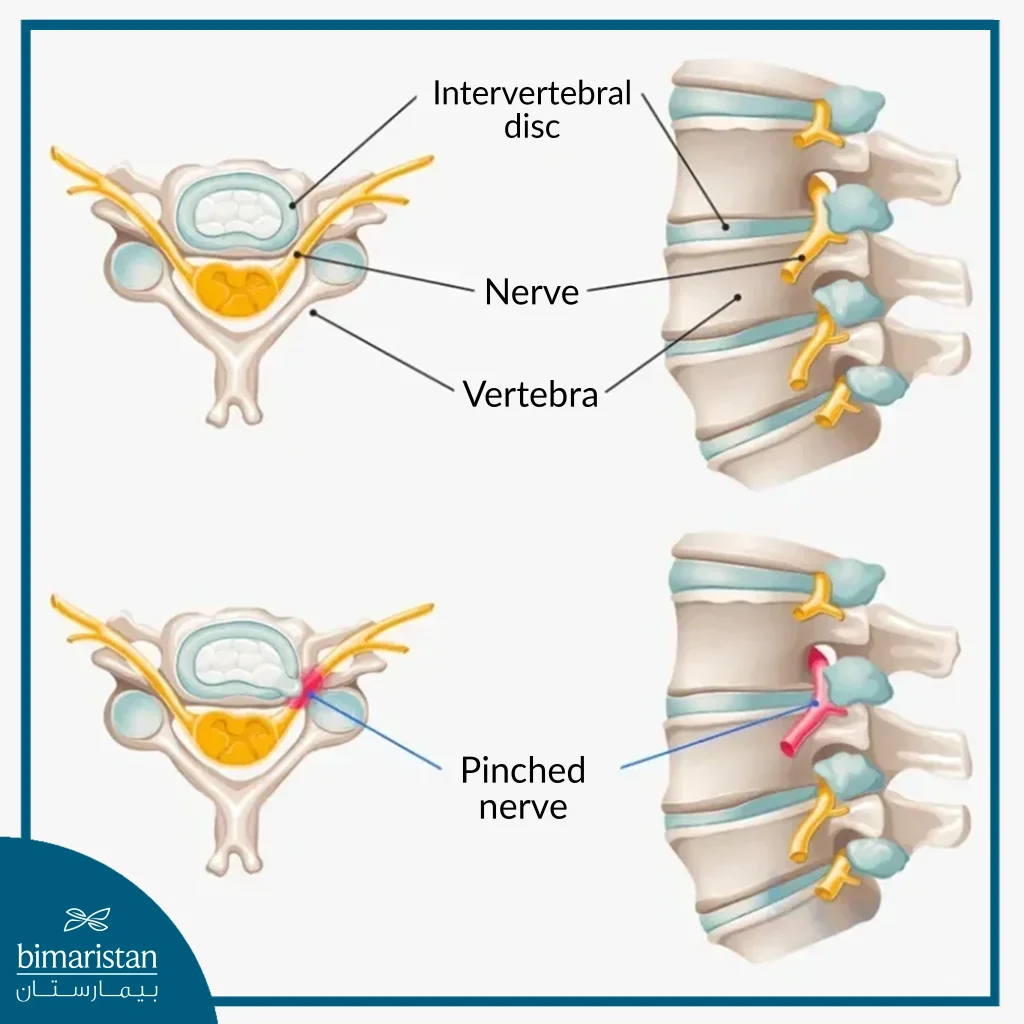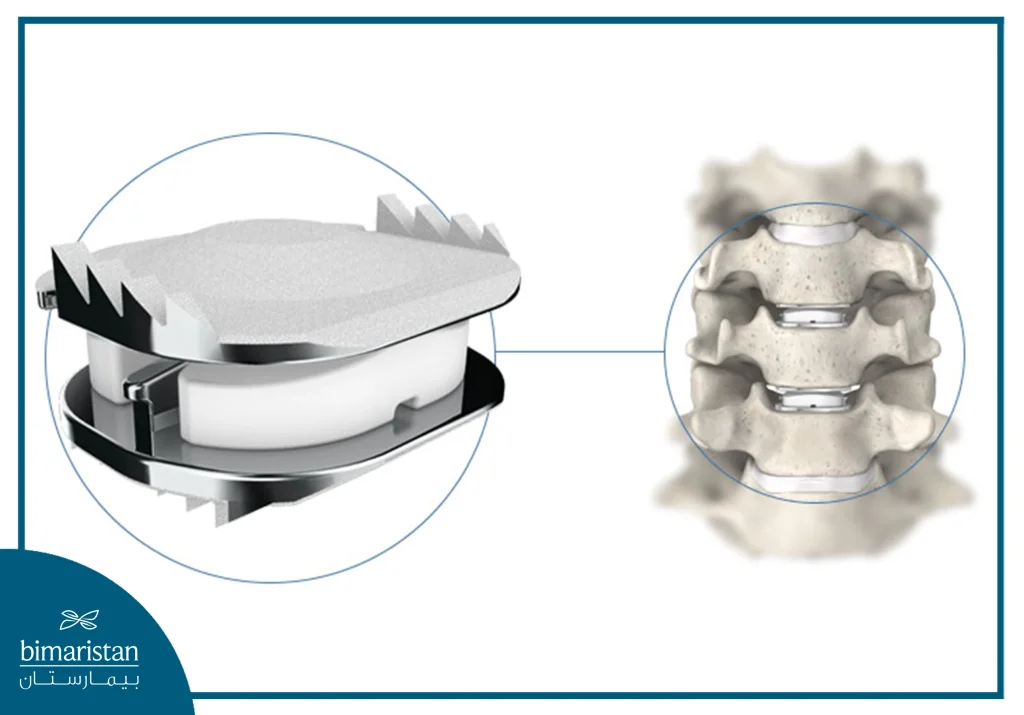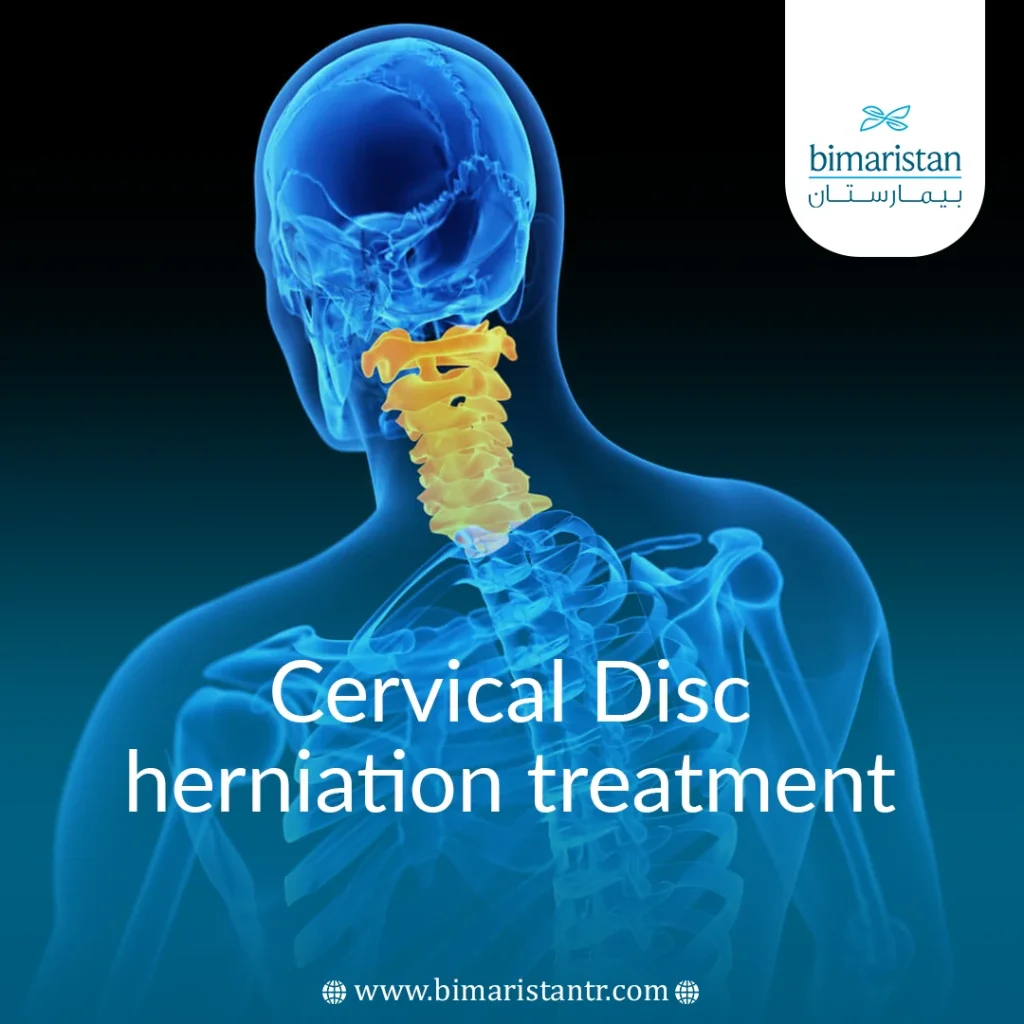Cervical disc herniation is a common cause of neck pain. Treatment methods vary, but herniated disc removal and fusion are the best treatments for cervical discs in Turkey.
About cervical disc herniation
If you feel pain in your neck or lower neck that you have never felt before, you may have a cervical disc. Although this may seem alarming, it is a common problem with aging, and you may develop it without showing any symptoms.
Cervical disc herniation, or what is called a “cervical disc,” occurs in the cervical section of the spine when the hard outer part of the disc cartilage (annulus) tears, allowing the soft center (nucleus pulposus) to come out of it. This is known as a “slipped disc.”

The vertebral column includes five sections: cervical C, thoracic T, lumbar L, sacral, and coccygeal. The cervical C section consists of seven vertebrae, C1-7. Intervertebral discs are located between most of the vertebrae of the spine (except the sacral and coccygeal), and they act as a cushion that allows the spine’s joints to move and prevents friction between the vertebrae.
Aging and aging are the most common causes of chronic cervical disc disease, as the spine gradually loses its flexibility and the disc sheath becomes easily ruptured. Acute cervical disc disease can occur after an injury or trauma to the cervical spine, and here, the symptoms are severe and sudden.
When the intervertebral disc ruptures, it presses on the spinal cord or spinal nerves, causing pain, numbness, or other neurological symptoms. Local inflammation and swelling can also lead to irritation of the cervical spinal nerve, which requires treatment of the cervical disc herniation as soon as possible.
Cervical disc herniation symptoms
Cervical disc herniation symptoms depend mainly on the nerve root compressed by the herniated disc, which is called radiculopathy; a cervical disc herniation may cause pain in the arm, shoulder, or neck, or numbness, tingling, or muscle weakness in the hand or arm may occur.

The pain of cervical disc herniation is triggered by moving the neck in certain directions, which distinguishes it from other conditions with similar symptoms, such as carpal tunnel syndrome.
Pain in the neck and/or arm may be the first sign of irritation and injury to the cervical nerve root, and numbness, tingling, and muscle weakness may indicate the severity of the problem.
If the spinal cord is compressed, many problems with walking or muscle spasms may occur, and urinary or fecal incontinence may occur, which is called “myelopathy.”
Learn more about treating urinary incontinence in men and treating urinary incontinence in women.
Here are the symptoms of a herniated cervical disc, which vary depending on the location of the herniated disc:
| Sensory Deficit | Affected Reflex | Motor Deficit | Disc Level |
| On the lateral side of the shoulder | – | On the lateral side of the upper arm, forearm, thumb, and index finger | C4-5 |
| On the lateral side of the upper arm, forearm, thumb and index finger | Biceps reflex | Biceps | C5-6 |
| Middle finger | Triceps reflex | Triceps, wrist extension | C6-7 |
| Pinky and ring finger | – | Hand closure, wrist flexion | C7-T1 |
Muscle weakness in the arm is a crucial sign that requires you to consult a doctor. Do not hesitate to contact Bimaristan Medical Center if you have neck pain or arm weakness. We will guide you to the best specialists to make a definitive diagnosis of the problem and provide the best treatment through new and advanced medical techniques.
Cervical disc herniation diagnosis in Turkey
The doctor will first listen to the medical history and complaints of the patient with a herniated disc. Then, he will assess the symptoms and conduct a physical examination to look for any limitation in neck movement due to pain, loss of sensation, or muscle weakness in an area of the hand or arm. The reflexes of the upper limb will also be evaluated, and any changes in them will be noted.
After the physical examination, the doctor may resort to radiography of the neck disc to confirm the diagnosis. Radiographs may include a simple X-ray of the neck, CT scans, or MRI, which are considered the best for accurately viewing the affected anatomical structures.
How to treat cervical disc herniation in Turkey
If you have a cervical disc herniation, you will have the opportunity to relieve symptoms through medication, exercise, or other options that do not require surgery on your neck. If this does not work to treat your cervical hernia, surgery in Turkey may be suitable for you to get rid of the hernia permanently.
Cervical disc herniation treatment without surgery
Non-surgical conservative techniques are usually started in Turkey to treat a herniated cervical disc naturally, and these include:
- Rest and take medications to treat cervical disc herniation, such as non-steroidal anti-inflammatory drugs (NSAIDs), which help reduce swelling at the site of the herniation and relax the body’s muscles to relieve spasms and neck pain.
- Physiotherapy and physical therapy to help relieve pressure on the nerve root include heat and cold therapy, gentle massage, muscle stretching, electrical stimulation therapy, or exercises to treat a herniated cervical disc.
- Epidural steroid injections under X-ray guidance deliver the medication precisely to the level of the herniated cervical disc. Steroids relieve inflammation and neurological symptoms. A neurosurgeon often performs this procedure. Learn more about disc injection treatment.
- Laser disc treatment is one of the latest methods for treating cervical discs, and research is still ongoing in this regard.
As for treating cervical discs with herbs, there is no medical basis for it.
It is worth noting that about 80% of cervical hernias in Turkey have been treated with these conservative methods after 4-6 weeks without resorting to neck surgeries. Do not let cervical discs cause you anxiety and stress, and remember that less than 5% of neck and back problems require surgery.
Surgical treatment of cervical disc herniation
If there are signs of spinal cord compression or if conservative cervical disc treatment fails to relieve neck pain and improve symptoms, cervical disc surgery is performed in Turkey to release the compressed nerves.
Discectomy
The most common surgery performed to treat a cervical disc in Turkey is anterior cervical discectomy with fusion (ACDF), which involves the complete or partial removal of the damaged disc and then fusing the vertebrae – usually from the front of the neck.
A herniated disc can now be treated endoscopically or microsurgically with minimally invasive spine surgery.
The procedure involves fusing or joining two or more adjacent cervical discs using bone grafts and special instruments such as bone plates and screws, which results in optimal cervical spine stability and neck pain relief.
If necessary, a posterior discectomy can also be performed to treat a cervical disc by removing part of the lamina covering the vertebral canal from the back, which is called a “laminotomy.”
Many patients in Turkey have achieved excellent results from fusion, as this procedure is considered the gold standard for treating cervical disc herniation based on many studies. Still, the only drawback associated with this type of spine surgery is the loss of flexibility and the ability to move the fused vertebrae.
Disc Replacement
This is a modern technique in Turkey that involves completely replacing the cervical disc with an artificial disc replacement that performs the same function as the natural disc. This treatment involves treating the cervical disc and maintaining the flexibility and movement of the vertebrae in place of the cervical herniation that is removed from the neck.

In conclusion, if you have a cervical disc herniation, you can relieve symptoms through medication, exercise, or other options that do not require surgery. If this does not work to treat your herniated disc, surgery in Turkey may be suitable to permanently remove the condition.
Sources:


